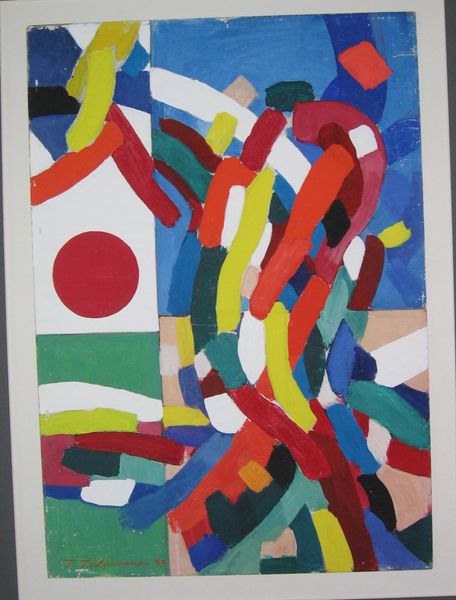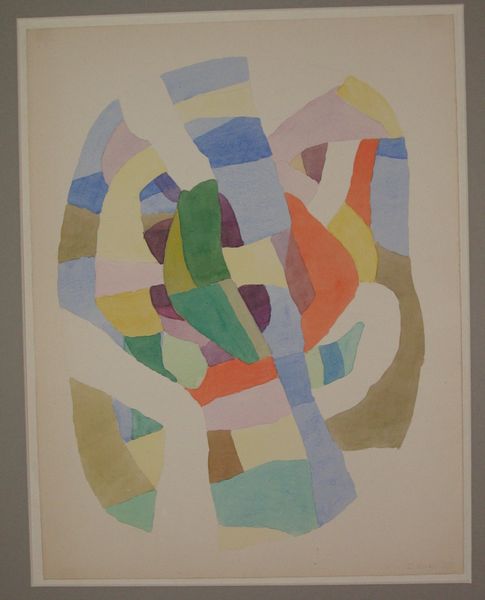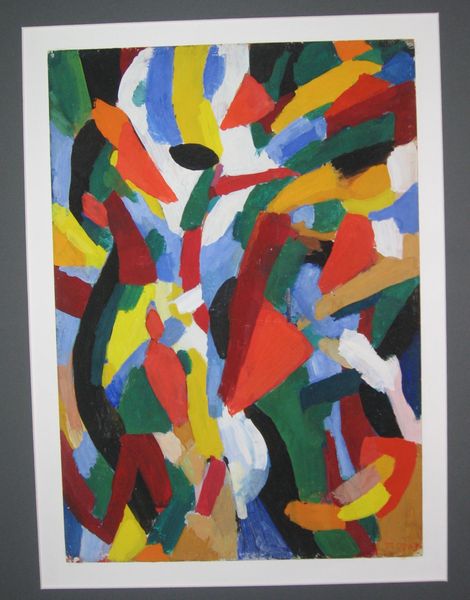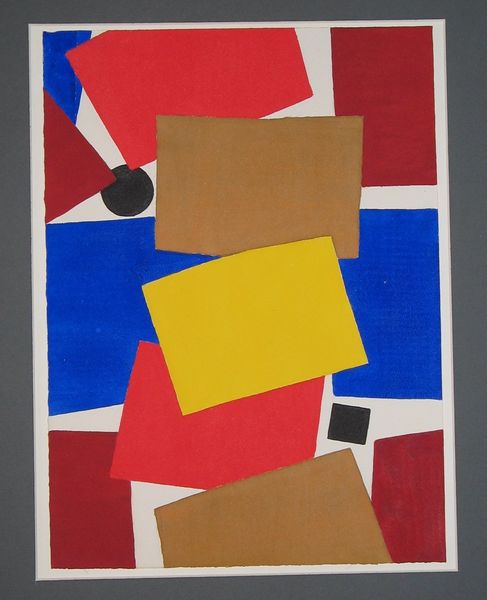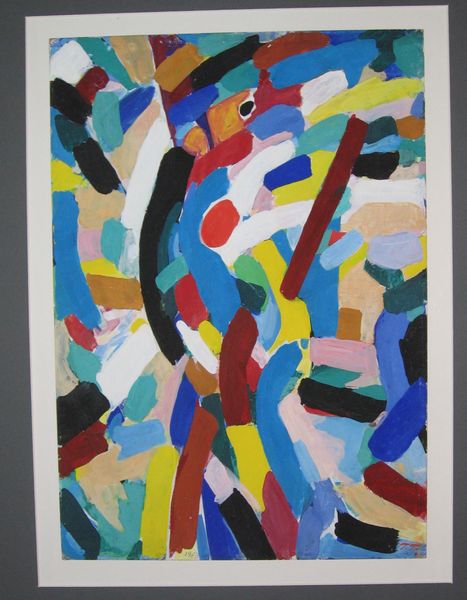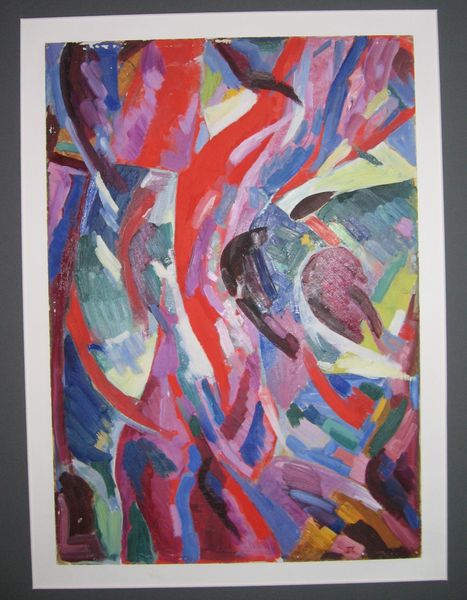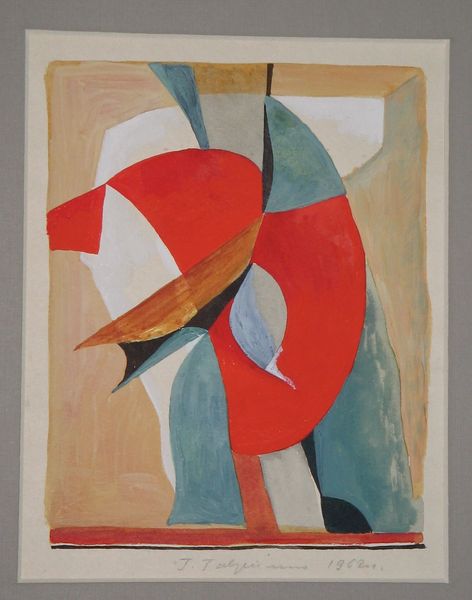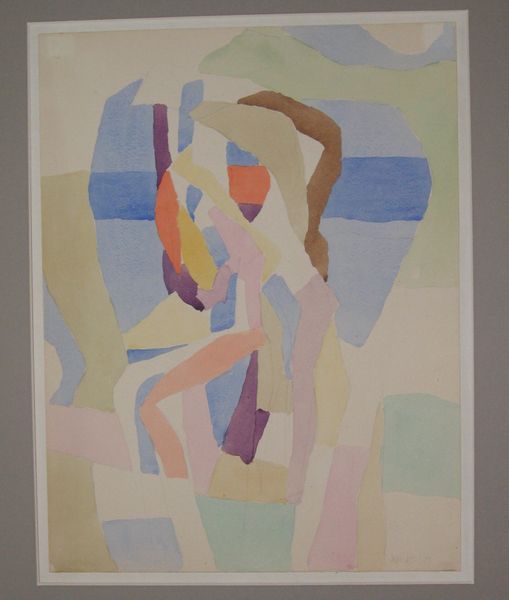
painting, watercolor
#
painting
#
watercolor
#
geometric
#
abstraction
#
modernism
Copyright: Hryhorii Havrylenko,Fair Use
Curator: Looking at "Composition", created in 1963 by Hryhorii Havrylenko, what strikes you most about this watercolor? Editor: It’s playful but also a bit melancholic. The geometry feels both orderly and chaotic, with those dark shapes weighing things down amidst the brighter hues. Curator: Indeed. The geometric abstraction evident here marks Havrylenko’s work as decidedly modernist, mirroring the spirit of optimism blended with underlying anxieties typical of the period. Editor: The choice of watercolor lends a delicacy to the potentially rigid geometric forms. Was this typical for artists working in abstraction during this era, or did material contribute to its public reception? Curator: I think watercolor offers both vulnerability and immediacy that serves the emotional depth of the work, almost subverting the more austere geometric structure. We might read the circles, the squares and triangles that frame its composition, as modern mandalas, anchoring points for introspection during turbulent times. Editor: You know, with this cultural frame in mind, the black shapes read less like oppressive forces and more like stabilizing anchors. Their recurrence does invite introspection, doesn’t it? How does that fit within Havrylenko’s larger body of work? Curator: This tension between playful forms and melancholic tones permeates much of his oeuvre, especially as Soviet cultural policy vacillated between limited artistic freedom and enforced socialist realism. Editor: That contextual pressure makes me reconsider this composition’s boldness. Its abstraction then speaks to an assertion of individual artistic voice within restrictive paradigms. What kind of an impact would it have on local audiences during this period? Curator: In its time, “Composition” would likely have provoked diverse responses—perhaps a celebration of creative liberty for some, while risking the disapproval of the cultural establishment. I do believe in these symbolic choices of forms and colors. Editor: Looking closer, there’s something almost… defiant in its delicate resistance. This exploration reminds us how important the role of institutions is to support independent visions. Curator: A wonderful reflection that leads us to recognize the interplay between personal expression and broader cultural narratives woven within a painting. Editor: Absolutely. These shapes still invite us to look closer and decipher new realities in public discourse.
Comments
No comments
Be the first to comment and join the conversation on the ultimate creative platform.
